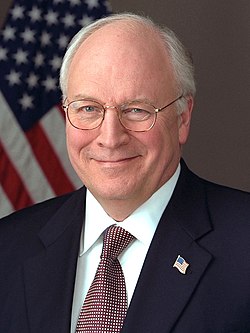| 108th United States Congress | |
|---|---|
107th ← → 109th | |
 United States Capitol (2004) | |
January 3, 2003 – January 3, 2005 | |
| Members | 100 senators 435 representatives 5 non-voting delegates |
| Senate majority | Republican |
| Senate President | Dick Cheney (R) |
| House majority | Republican |
| House Speaker | Dennis Hastert (R) |
| Sessions | |
| 1st: January 7, 2003 – December 8, 2003 2nd: January 20, 2004 – December 9, 2004 | |
The 108th United States Congress was a meeting of the legislative branch of the United States federal government, composed of the United States Senate and the United States House of Representatives from January 3, 2003, to January 3, 2005, during the third and fourth years of George W. Bush's presidency.
Contents
- Major events
- Major legislation
- Enacted
- Proposed, but not enacted
- Party summary
- Senate
- House of Representatives
- Leadership
- Senate 2
- House of Representatives 2
- Members
- Senate 3
- House of Representatives 3
- Changes in membership
- Senate 4
- House of Representatives 4
- Committees
- Senate 5
- House of Representatives 5
- Joint committees
- Caucuses
- Employees
- Legislative branch agency directors
- Senate 6
- House of Representatives 6
- See also
- Elections
- Membership lists
- Notes
- References
- External links
House members were elected in the 2002 general election on November 5, 2002. Senators were elected in three classes in the 1998 general election on November 3, 1998, 2000 general election on November 7, 2000, or 2002 general election on November 5, 2002. The apportionment of seats in the House of Representatives was based on the 2000 United States census.
This is the most recent Congress to have a Democratic senator from South Carolina, Fritz Hollings, who retired at the end of the Congress.
Both chambers had a Republican majority, with the Republicans slightly increasing their edge in the House, and regaining control of the Senate, after party control had switched back and forth during the 107th Congress due to various factors. With President Bush, this gave the Republicans an overall federal government trifecta.














